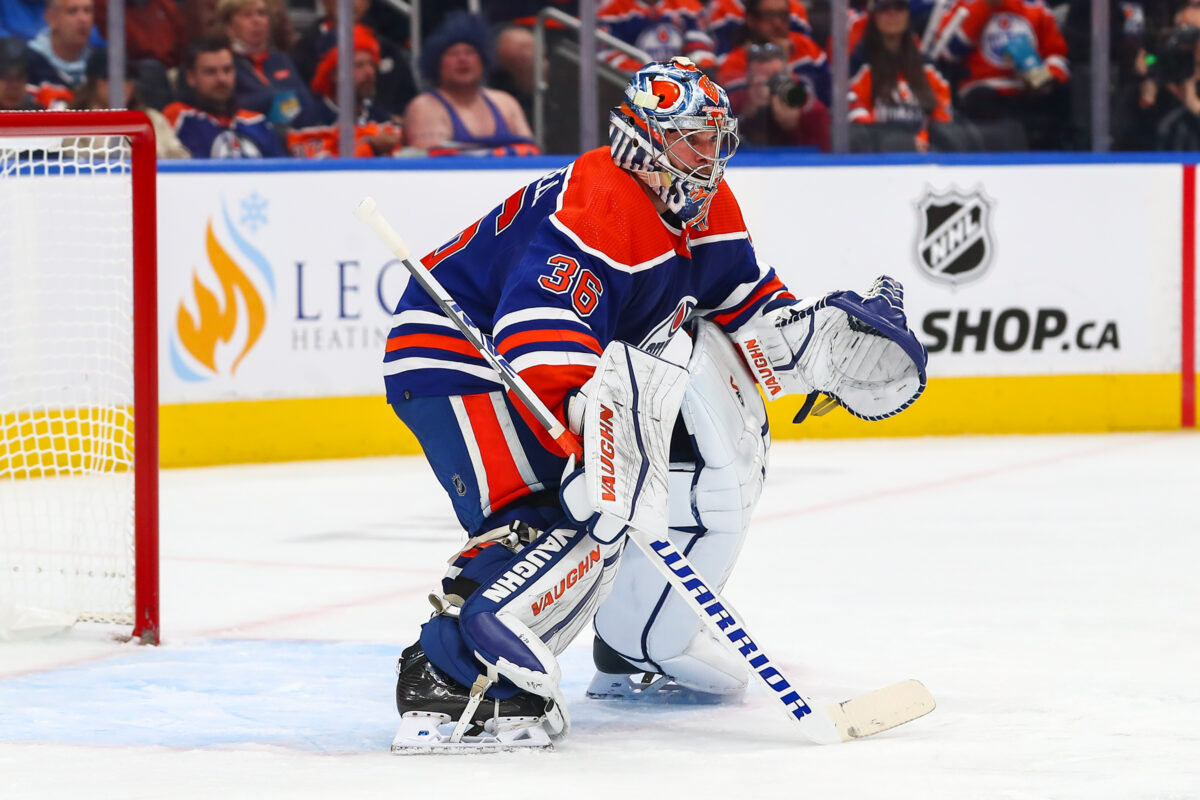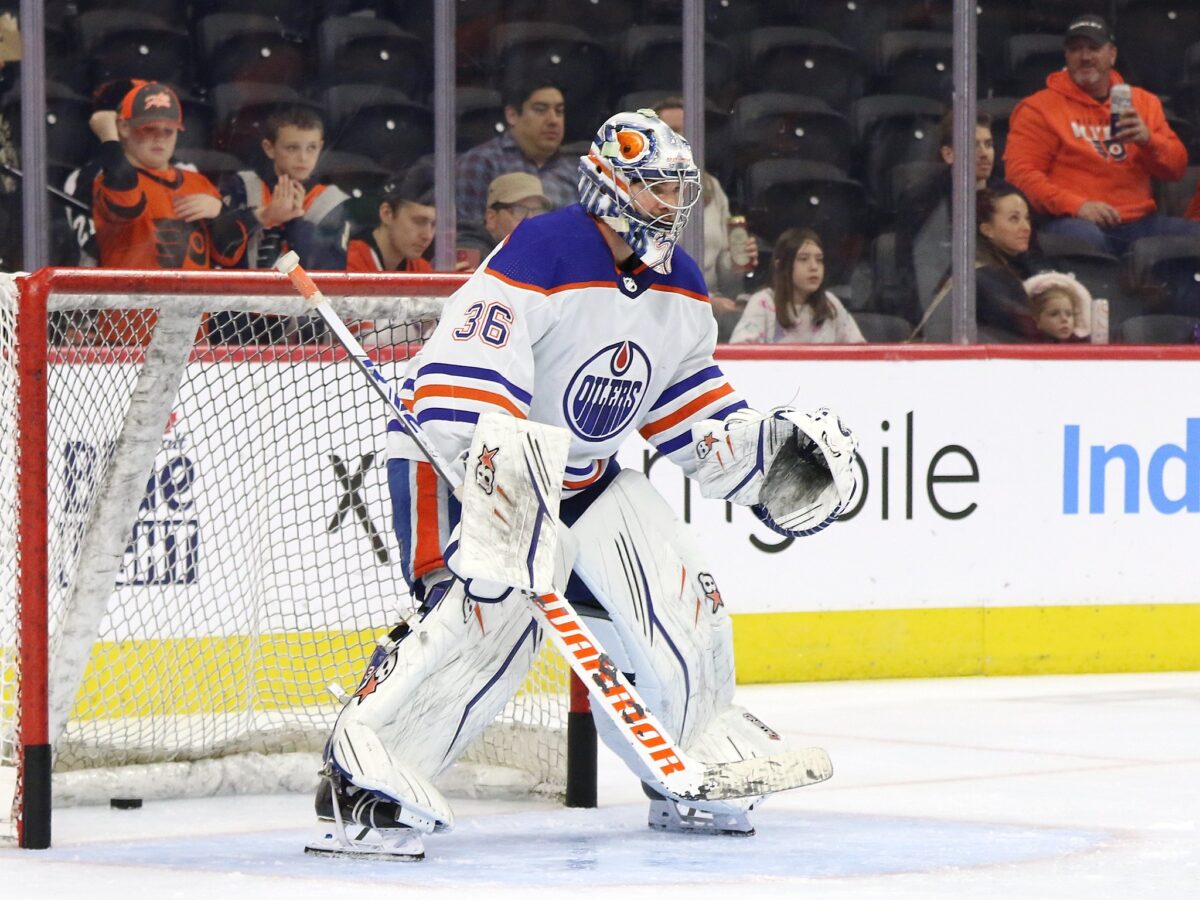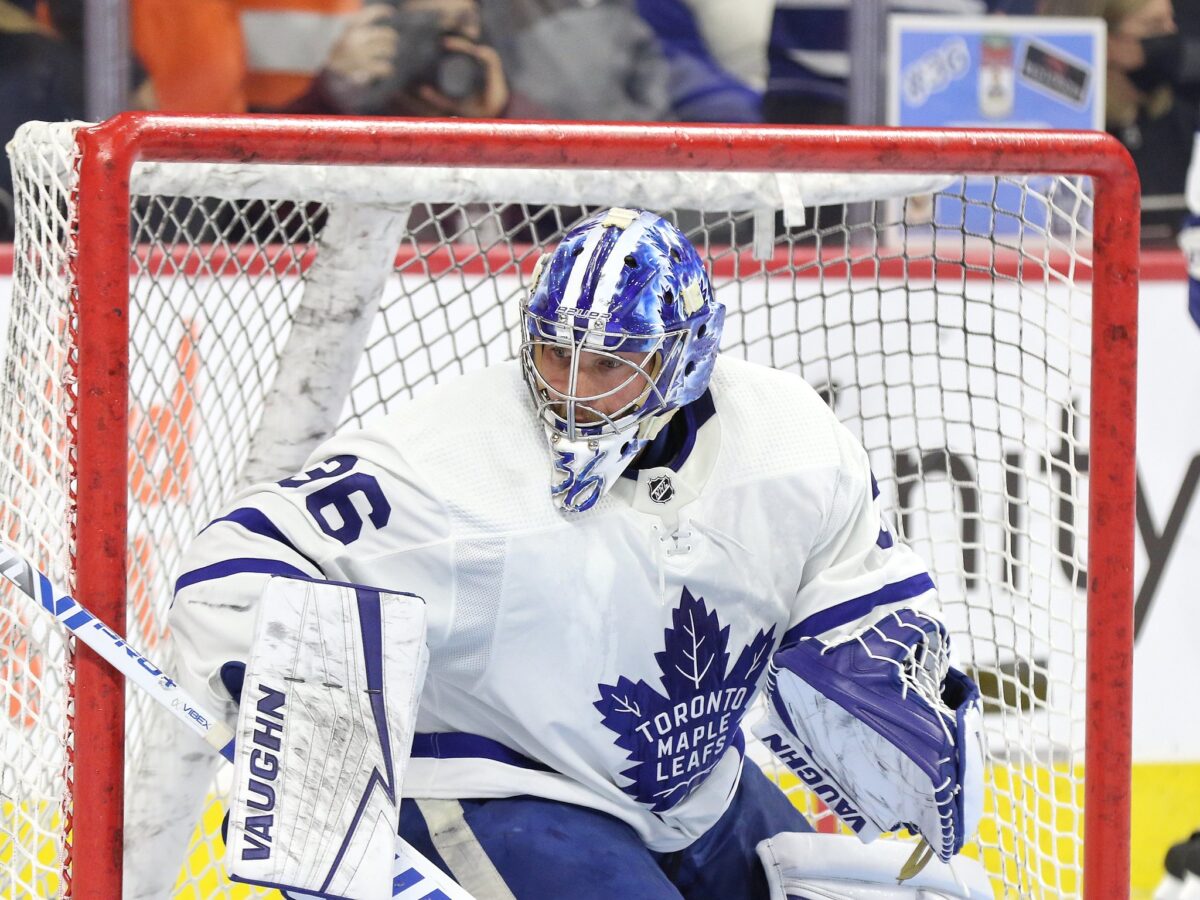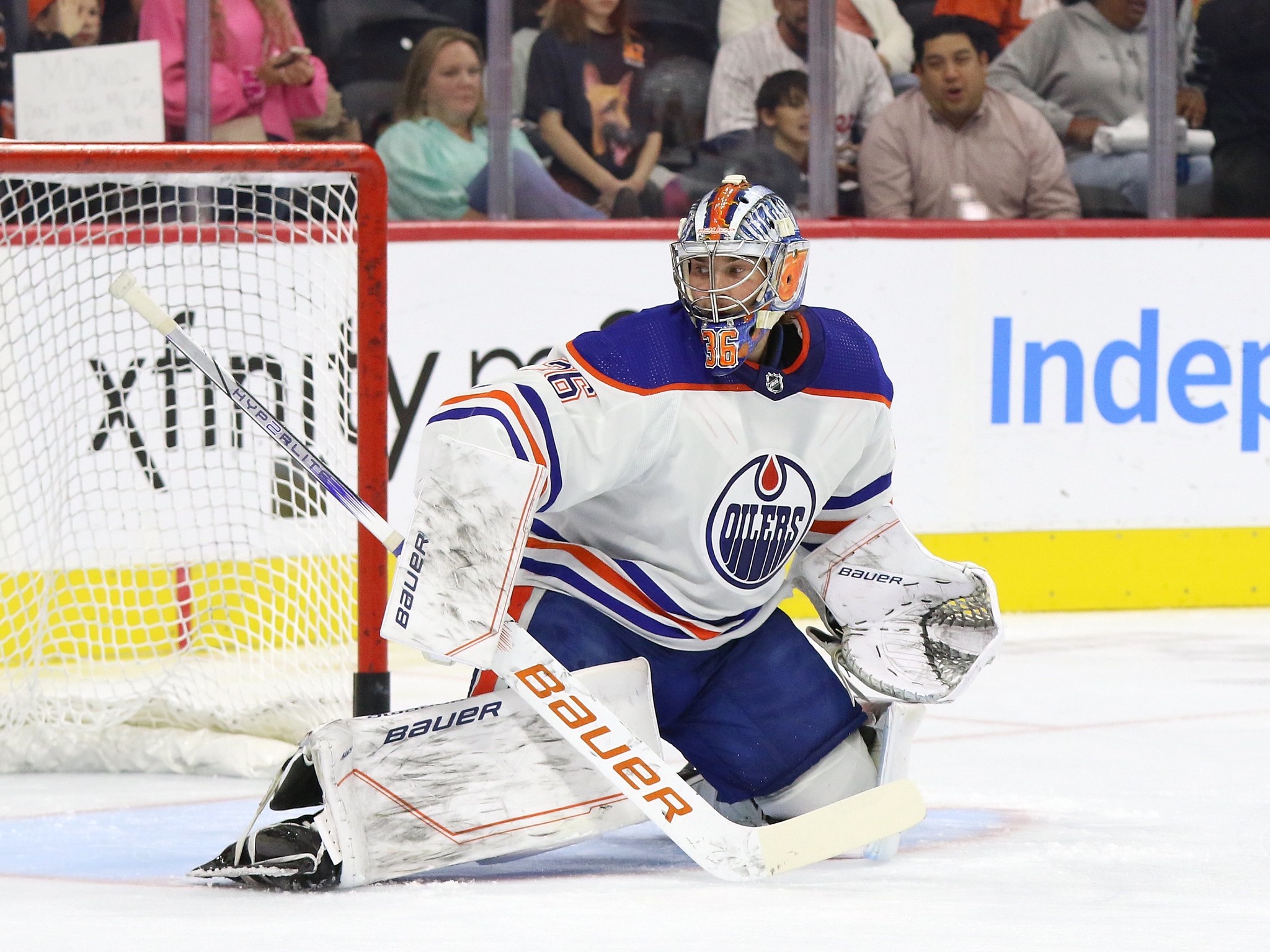Jack Campbell’s NHL journey has been nothing short of a rollercoaster. Drafted 11th overall in 2010, he entered the league with high expectations—but took the long road through development struggles, injuries, and uncertainty before finally emerging as a reliable backup with the Los Angeles Kings. When the Toronto Maple Leafs acquired him, he eventually got his chance to step into the spotlight—and quickly won over fans and teammates alike.
Related: History of NHL Coaches in the Playoff Handshake Line & Why They Belong
Campbell wasn’t just good between the pipes—he was good-hearted. Known as one of the nicest players in hockey, he carried the weight of every goal against personally. If something went wrong, he blamed himself, even when it wasn’t his fault. That self-imposed pressure both endeared him to fans and hinted at the emotional burden he carried. During his first full run with Toronto, Campbell was electric. He set a franchise record for most consecutive wins to start a season, earned an All-Star nod, and seemed to have finally arrived as a dependable No. 1 goalie.
Campbell Signed with the Edmonton Oilers
Then came free agency, and Campbell signed a five-year deal with the Edmonton Oilers. It was supposed to be the next big step. But instead of building on his Toronto success, his game unraveled. His confidence collapsed, his performance faltered, and the pressure of a Stanley Cup-starved market seemed to consume him. Eventually, Edmonton bought out his contract.

Still, Campbell didn’t disappear. He signed a one-year, $775,000 deal with the Detroit Red Wings and spent the 2024–25 season in the American Hockey League (AHL) with the Grand Rapids Griffins, quietly trying to rebuild his game—and perhaps himself. As of now, he’s unsigned. But the question remains: Can Jack Campbell make it back to the NHL?
He has the skill. He has the experience. And he certainly has a long list of fans rooting for him. Comebacks have happened before in this league, so why not him? It couldn’t happen to a nicer guy. But does Campbell have one more comeback in him?
The short answer? Not impossible.
Related: Maple Leafs News & Rumours: Marner Reckoning, Blue Line Biggies & McMann Make-or-Break
In this post, we’ll dive into the reasons for Campbell’s fall from NHL nets, what it would take to bring him back, and whether a true comeback story is still on the table.
Campbell’s Steep Decline: How It Evolved
Campbell’s decline was sharp and, at times, painful to watch. After signing with the Oilers, the expectations were high. But instead of solidifying their goaltending, he crumbled under pressure. Campbell’s confidence visibly eroded, and in the 2022–23 season, he posted a rough .888 save percentage, alongside a 3.41 goals-against average, in an Oilers jersey. Far below league average—and miles away from what you’d expect from a $5 million goaltender signed to be #1.

Eventually, Edmonton gave up and handed the crease to Stuart Skinner, a less experienced goalie who quickly overtook Campbell. Campbell’s performance issues weren’t just about numbers—he looked (and seemed) unsure: overthinking plays, slow to react, and not prepared to be the #1 netminder during a Stanley Cup-challenging era of Oilers hockey. The mental strain was evident.
Related: 4 Ex-Maple Leafs Who’d Make the Best Neighbours
As noted, Campbell signed a one-year, $775,000 contract with the Red Wings on July 1, 2024. That deal covered the 2024–25 season, keeping him under contract with the club through the next spring. While the terms reflect a backup or depth role, it gave Campbell another shot to prove he can handle NHL minutes if the opportunity arises. In his time with the AHL’s Griffins, Campbell posted a 5–7–1 record with a 2.91 goals-against average and a .893 save percentage over 13 games. It was far from a stellar season.
Why Campbell’s Return to the NHL Crease Is a Long Shot
Reason One: Campbell’s Confidence Issues Have Piled Up
Fans who have followed Campbell’s career know that he has always been his own harshest critic. That might sound like a good trait, but in goaltending—one of the most mentally demanding roles in all of sports—it can backfire: more detriment than profit. When he hits a rough patch, self-doubt snowballs.

(Amy Irvin / The Hockey Writers)
After signing his $25 million contract with the Oilers, the pressure to perform seemed to overwhelm him. He never looked comfortable. That fragile confidence makes it even more difficult for a trusted NHL goaltender to bounce back.
Reason Two: Campbell Has Seen His Performance Decline
The numbers tell the story. While donning an Oilers jersey, Campbell didn’t come close to being average at the NHL level. As Campbell’s positioning, reaction time, and rebound control all seemed to have declined, coaches noticed—and began to stop trusting him.
Hope Isn’t Lost for Campbell: History Has Comeback Stories
Throughout NHL history, goalies have been notoriously unpredictable. For every netminder star who fades away, another seemingly rises from the depths of poor play. Campbell’s path back to NHL stardom is challenging, but not impossible, if a few things can go right for one of the nicest guys in the game of hockey.
Related: The Mental Battle of NHL Goalies: Samsonov and Campbell
And many fans are rooting for him to scratch and claw his way back into an NHL crease.
What Campbell Needs to Return to the NHL
1. Campbell Needs to Rebuild His Confidence and Become a Top Goaltender in the AHL
Step 1 is a simple one: Campbell needs to begin the 2025–26 season dominating somewhere in the AHL. By stringing together a consistent stretch in AHL action, he could start to prove he’s preparing himself to handle high-pressure situations again. Although such a string of great games in the AHL will merely be a short step toward proving to coaches he can be a trusted NHL goaltender again. However, it’s a step that’s necessary.
2. Campbell Needs to Work on His Technical Game
Under the high pressures of professional goaltending, Campbell’s mechanics seemed to fall apart. If he works with an effective goalie coach to clean up his play (e.g., stance, angles, depth, rebound control), perhaps he can begin to stabilize his game. As history has taught us, a large number of goalies have done it before (for example, Sergei Bobrovsky).

Mandatory Credit: James Guillory-Imagn Images
Additionally, if Campbell can find himself in the spotlight again—due to effective play in AHL action—it might come at the “right time” when an injury creates an opening; an NHL team might suddenly need an experienced goalie and take a chance on a veteran like Campbell. That’s how opportunities often appear in this league. A long shot, but not impossible.
The Bottom Line for Jack Campbell’s NHL Return
At age 33, it is clear that time is running out for Campbell to regain his game, and the “to-do” list would have to be completed at an almost rapid pace for the level of redemption under discussion here. However, as mentioned, the game of hockey has seen some phenomenal comeback stories in recent years, particularly among netminders who have worked hard to improve their game, re-establish trust with their coaches, and ultimately regain their NHL crease and achieve elite-level hockey stardom (e.g., Devan Dubnyk, Cam Talbot).
Related: An Overlooked and Unpopular Deal Could Save the Oilers Millions
As Campbell continues his journey back toward an NHL crease, with support from those close to him, the right mindset, effective coaching (both on and off the ice), and a timely opportunity, Campbell could write his next chapter in the NHL. And, it just might be timely enough for a team to “get over the hump” at the right time.
If you’re a fan of NHL redemption stories—the “Comeback Story”—don’t write former NHL All-Star goaltender Jack Campbell off just yet. He has a long, steep, laborious, and jagged climb ahead—but if he scratches, claws, and discovers his way back to ‘A’ game performance levels—on a consistent level—we might see “Soupy” back in an NHL crease again.
And that would make for a remarkable comeback story to add to hockey’s history book.
[Note: I’d like to thank Brent Bradford (PhD) for his help co-authoring this post. His profile can be found at www.linkedin.com/in/brent-bradford-phd-3a10022a9]



